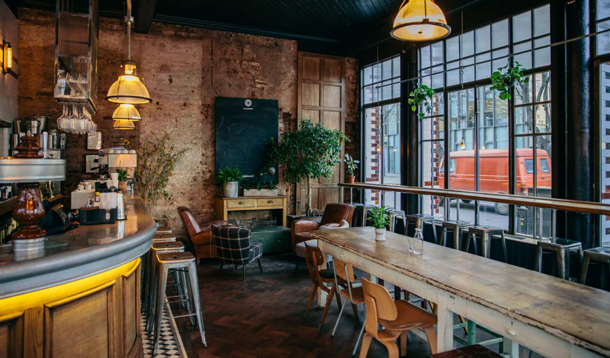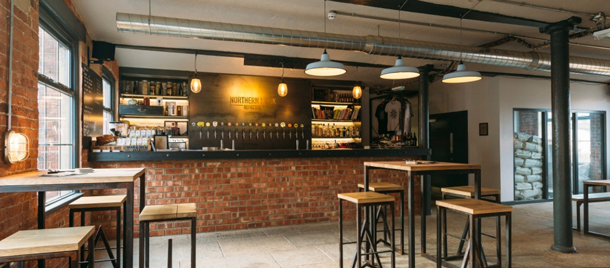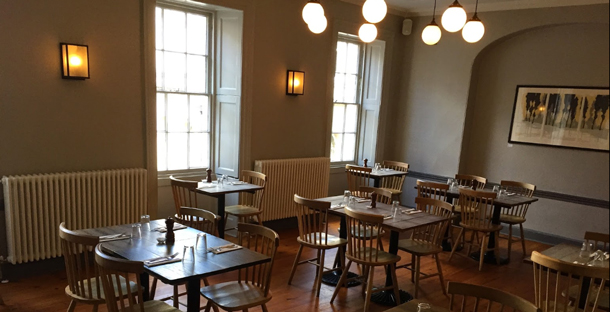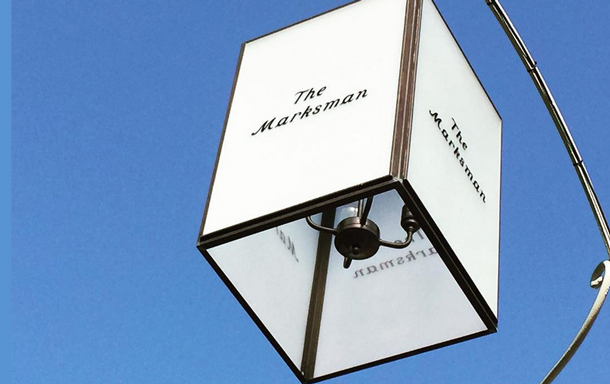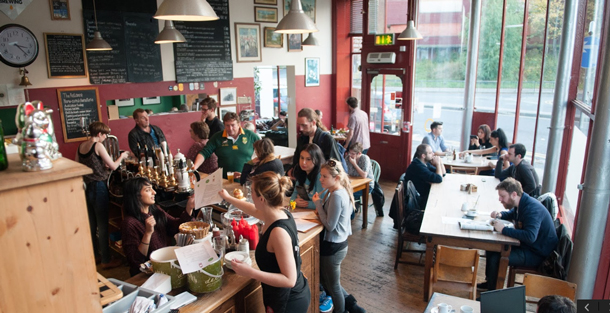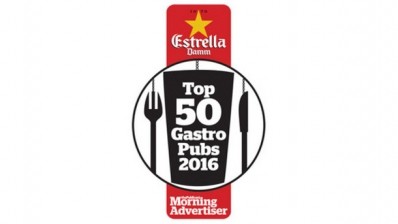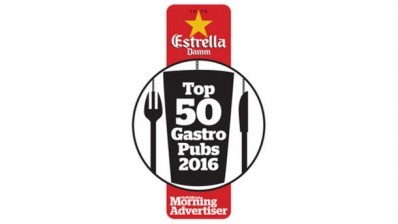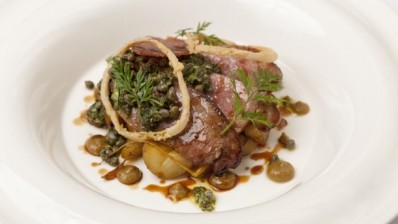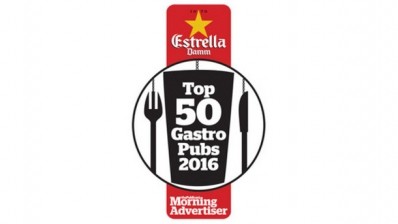Gastropubs debate
The end of 'Gastropubs'? How restauranteurs are changing the game...
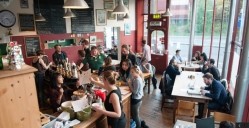
News of the death of the great British gastropub (see 2007, 2009, 2011) has been greatly exaggerated, with practically every town in the UK home to at least one establishment that goes by such a name these days. What began with the likes of The Eagle in Farringdon, which eschewed the hitherto standard pub food of a ploughman’s lunch or sandwich for something slightly more refined, has since become a catch-all term for any place that takes its food offer more seriously than just reheating food from the local cash and carry in the microwave.
The gastropubs of today are something of a homogenised entity, often defined by their love of mismatched furniture, triple-cooked chips, artisan beers, ‘proper’ pub snacks and gourmet burgers, with it becoming increasingly hard for diners to recognise those places that truly are ‘gastro’ and those that merely have the trappings of one. As with craft beer, an increasingly commonplace term which now encompasses as many brews from large-scale international players as it does microbreweries, the idea of the gastropub has lost its potency, but none of its popularity, in much the same way.
Now a new breed of pub is breaking away from the pack although, unlike the gastropub, it is a many-headed beast. From places that have retained both a pub and restaurant feel with distinctly different areas and those that are embracing a more down-at-heel vibe to those that defy any sort of categorisation, the food-led pub scene is redefining itself. Here are five of the best practitioners of this new movement.
The high-reaching hybrid: The Culpeper, London
Located on the site of the former Prince Alice pub, The Culpeper is the brainchild of owners Nico Treguer, Gareth Roberts and Bash Redford, who have turned a dilapidated Victorian boozer in Spitalfields into an ambitious four-floor pub/restaurant with rooms.
Treguer, a gardener by trade, and Roberts, an architect, joined forces with Redford, who founded Italian supper club Forza Win on a rooftop in 2012, after discovering they shared a mutual love for rooftop spaces. As a result, one of The Culpeper’s most striking features is its rooftop herb and vegetable garden that also houses a custom-built, wood-fired grill, greenhouse dining room and bar.
What also makes The Culpeper stand out is its dual approach that has retained the essence of a pub while simultaneously having a high-reaching kitchen. Both are kept separate, however, so that it doesn’t fit the increasingly homogenised gastropub mould.
The pub initially reopened in July last year under its new guise with just the ground floor in operation, serving a good selection of beers and an ever-changing food menu of pub classics – pork pie, fish and chips and sandwiches – as well as some less obvious plates, such as braised lamb leg with harissa hummus, roasted cauliflower and dukkah. The bright space is as conducive to drinking as it is eating, and The Culpeper is still wet-led, according to Redford, although food sales are edging towards the 40% mark.
Having re-established its customer base, in March this year it then opened its first-floor dining room – a slightly more formal version of the downstairs pub, with full table service. Overseen by head chef Sandy Jarvis, formerly head chef at Terroirs, the food on the first floor is more ambitious than that served below, with dishes such as glazed rabbit leg with polenta and chopped raw beef with bottarga as well as sharing plates, such as 500g veal chop and whole monkfish. The 44-cover dining room also makes much use of the produce grown on its roof.
To date the upstairs restaurant is only open for dinner, but high demand means it will soon open at lunchtimes. While the downstairs bar is routinely packed with local workers and what Redford describes as the ‘less suited’ crowd, upstairs is attracting a more moneyed clientele, both of which are intrinsic to the pub’s success, he says.
“It was important for us to retain the pub element,” says Redford. “It was a conscious decision. In no way did we want to be seen as what people would brand a ‘gastropub’. Gastropubs get a bit of a negative press and, to a certain extent, I can understand why. If you are not aware of what you’re doing, you can alienate people. A pub is an important part of the community – you need to think about what the people who live in the community want from it. It was important to retain that ‘welcome to all’ vibe.”
The brewery tap: The Refectory, Leeds
If there is one indisputable fact in the modern pub game, it is this: people will put themselves out for incredible beer. They travel for it, hunt it out and often in unusual places. Such as a de facto business park, 10 minutes-walk out of town from Leeds railway station. Located in a former mill, above its brewery, Northern Monk’s 20-tap The Refectory bar is, says MD Russell Bisset: “A celebration of craft brewing”.
Bisset had been “cuckoo-brewing” previously, but the Marshalls Mills site, launched in October 2014, is his first permanent facility. For the brewery, he needed cheaper space and good transport links, but in a location where the bar – which contributes 30% of turnover – would not be too far out of central Leeds. “Now, our reputation brings people to the site. When we opened, getting people to walk to a bar on the periphery of what used to be the red light district, was an ask. It’s important to be relatively accessible.”
Social media gave The Refectory a foothold among West Yorkshire’s beer geeks, and it has further cultivated that fan base with a lively calendar of launches, tastings and meet-the-brewer nights.
However, Bisset has also sought to give the bar ‘destination appeal’ beyond its core audience. He recommends forging symbiotic relationships, both culturally (The Refectory hosts exhibitions/gigs), and with like-minded businesses. “It’s a great way of growing the brand,” he says.
Most significantly, after setting up a shell kitchen space, Bisset invited Leeds’ pop-up stars Grub & Grog (G&G) to provide food. The Refectory takes a commission on G&G’s sales of its gutsy, affordable dishes which, particularly in their creative use of beer and ingredients, clearly complement The Refectory’s offer. Immediately, it was able to tap into Christmas trade from the nearby offices, and many of those staff still hit the bar after work on Fridays, “when we go through a lot of wine and vodka”.
Some specialist beer bars might sneer at that trade, but Bisset (he employs 11 people; six of those focused primarily on the bar), purposefully recruited both craft beer enthusiasts with operational bar experience and non-specialists, in order to avoid The Refectory becoming too pretentious. Bisset encourages his staff to offer customers tasters rather than a detailed back-story for every beer. As he puts it: “You get over-loaded with information.”
Keeping the beer geeks happy is not without its issues, however. The Refectory tends to use two of its four cask lines (with such choice, they were not getting through four quickly enough) “which upsets the CAMRA folk, sometimes”. The market is also still price-sensitive. The Refectory, which maintains a 60% GP across the bar, can sell £5 halves of specialist beers, many of these imports from the world’s best breweries, but a pint starts at £2.70 and there is a definite sales sweet spot at about £4. Bisset says:
“In the UK, there’s a belief beer should be readily available and shouldn’t cost much. It’s changing, but there will always be that culture.”
The modern pub: Pint Shop, Cambridge
It sounds simple, but creating a pub which is – genuinely – as welcoming for drinkers as it is diners is incredibly difficult. When they opened Pint Shop in 2013, ex-Leon duo Richard Holmes and Benny Peverelli purposefully refused to define it (pub, bar, restaurant?), for fear of creating any mental barriers. It arrived, instead, under the enigmatic tag line: ‘meat, bread, beer’. “We’re trying to create a modern pub, but we don’t want to tell people that – we let them decide,” says Holmes.
The site consists of a 65-seat bar, visible from the street and, hidden out back, a dining room – with overspill space for a total of 70 food covers. Very limited food is served in the bar and Pint Shop’s beer menu (16 cask/keg lines of edgy craft beer) is displayed in the restaurant. But the bar and restaurant are distinct entities. Customers can transition fluidly between the two, but neither imposes on the other.
The city-centre building that was formerly office space – and opposite a Jamie’s Italian – has posed some issues, such as staffing levels and rotas having to be split across the two sections and the need for supplementary street signage to better flag-up the restaurant but, despite this, Pint Shop has been a big hit. It was, arguably, Cambridge’s first dedicated craft beer bar and there is a nice conceptual cohesion in its focusing on charcoal-grilled and spit-roasted food. It’s a good ‘fit’ for a pub – which, nonetheless, gives the kitchen considerable creative freedom.
Peverelli’s dishes, such as sea bream with braised white beans and romesco sauce (mains are approximately £14), are more sophisticated than that headline concept might suggest. Consequently, Pint Shop attracts a lot of wine-drinking foodies at night, although beer is more popular at lunch and on Sundays.
Rather than on menus or as pairings, Holmes prefers staff to sell the beers verbally and offer tasters, both in the bar and restaurant. When selling new-wave beer, minimising mis-selling and making sure people get what they want is crucial: “We put a lot of effort into training so the teams understand what goes with what food.” In the bar, a decent selection of wines by-the-glass, upmarket mixed drinks and two lagers (filtered/unfiltered) is essential, to keep non-craft guests onside. “Lager is still the biggest selling, followed by IPAs,” says Holmes. “Saisons sell in summer, imperial stouts during winter. Sours are probably the slowest moving. People enjoy them, but in halves. If they’re not big names, and because they’re more expensive, some import beers can be slower, too.”
The bar is so successful that the restaurant contributes less to revenue (55%) than expected. Now, with the Cambridge site handed over to a management team, Holmes and Peverelli are looking at venues on the same two-room model in Oxford and, even, London. “It’s us two, and it’s private money, so it’s not going to be 10 sites a year, but we’d like to add more during the next five years,” says Holmes.
The split personality: The Marksman, Hackney
Chefs Tom Harris and Jon Rotheram reopened this archetypal East End London boozer to rave reviews earlier this year. They received particular praise for preserving the pub’s look and feel, and retaining the regulars while simultaneously serving serious food that befits their experience in some of London’s best restaurants, including St John, where the pair met.
“Lots of pubs in this part of town have been lost to gentrification. They’ve been stripped back to the point that there’s nothing left,” says Rotheram. “We don’t want to close The Marksman off to people who have been drinking there for decades so the downstairs remains a proper boozer.”
The ground floor retains its original feel, but the upstairs – most recently a flat – has been given a modern look that contrasts sharply with the traditional wooden-panelled bar area.
“We did briefly consider mimicking the style downstairs and creating a sort of faux Victorian dining room, but decided it would feel a bit forced,” says Rotheram. “Instead, we’ve gone for something totally modern that contrasts with the downstairs area. We used Martino Gamper (a famous Italian designer based in London) because he hasn’t done restaurants or pubs before and we wanted to avoid modern pub and restaurant design clichés such as exposed brickwork and retro light bulbs.”
The Marksman’s downstairs bar serves a mixture of drinkers and eaters. The pair have made the drinks offer more niche – interesting beers, good wine and top-quality spirits – but have kept on the mainstream lager (Foster’s) the pub served to retain the locals.
Harris and Rotheram don’t take bookings in the main downstairs area to keep the space drinks-focused. They also don’t lay up the tables because they believe that can put off those that just want to drink.
The upstairs dining room is entirely geared towards eating. The pair’s dishes aren’t really pub-themed, but it’s all the sort of thing you’d be happy to eat alongside a pint. The menu incudes salt hake and potato rissoles; grilled clams, wild fennel and salt lemon; lemon sole, cucumber, samphire and brown shrimp; curry; and brown butter and honey tart.
“We shift a lot of Jon’s beef and barley buns but our top seller is the curry. We make it with either kid goat or duck and it outsells every other dish two to one,” says Harris. “We have to take it off the menu occasionally to give the other main courses a chance. The food here is English but there’s nothing more English than a curry in a pub.”
The Marksman is a business that proves it is possible to have your cake and eat it. Harris and Rotheram have created a trendy, destination pub that’s already attracted national critical attention while simultaneously keeping the pub’s core of regulars sweet.
The deceptively basic boozer: The Reliance, Leeds
We live in an era of concepts that launch as the finished article, ready for rollout. The mantra is that any new hospitality business must be tightly focused and easy to understand. Yet, for 14 years,
The Reliance has thrived by doing exactly the opposite. This city-centre pub and dining room is a multi-faceted enterprise with an, arguably, contradictory offer whose appeal hinges on that nebulous quality – attitude.
Joss Ainsworth, who runs The Reliance with his partner, Rebecca Winlow, agrees that the pub has a bohemian, artsy feel, but beyond the basics – the use of plain, natural finishes and mix ’n’ match furniture
in this old retail unit (initially a financial necessity, now an aesthetic) – he struggles to identify precisely how that atmosphere was fostered. “I think it’s more about people and personalities, rather than the space, product and fabric of the building,” he says. “Anywhere is a reflection of the people who run it. It’s not something you manufacture.”
The Reliance has always sought to do two things: offer a high quality product and embrace new ideas, and has evolved accordingly – in an honest, authentic way. For instance, it opened without table service, but as food sales grew (wet:dry split is now 50:50 and The Reliance can do 150 covers on a Saturday night), a dedicated dining room became a necessity. You can also still eat in the bar.
It has latterly embraced small sharing plates, yet its Mediterranean/modern British menu still includes pub stalwarts like sausage ’n’ mash next to, say, roasted mackerel, fennel and pink grapefruit (mains cost about £12). “They stick out like a sore thumb,” says Ainsworth, of those pub classics, “but they sell”.
Much of the innovation at The Reliance has been driven by personal passion. Ainsworth runs an arthouse cinema in its private dining room; general manager Steve Nuttall ensures the wine and craft beer range remains pin-sharp; while chef, Tom Hunter, as well as getting creative on the menu, has developed the home-cured charcuterie side of the business. It now occupies one person full-time and The Reliance supplies many of Leeds’ best bars/restaurants with salami and lomo.
Allowing staff that freedom, says Ainsworth, is crucial in order to retain good employees and keep things fresh. “The market has such a voracious appetite now for new, innovative things that you’ve got to keep a point-of-interest for people. The charcuterie is labour-intensive. It just about pays its way. But it’s one of those things you have to view as a marketing exercise as much as a money-making one. It’s become part of who we are.”
Such laid-back common sense may shock hospitality’s ruthless number crunchers. Yet, certainly in a pub environment – where a warm, inclusive community feel is key – perhaps that holistic approach wins out. Ainsworth says: “We keep growing year on year. It’s on a nice upward curve. As long as we keep evolving and trying to improve, we’ll do all right.”
The Estrella Damm Top 50 Gastropubs list will be announced on 25 January at an exclusive event in Hitchin. For more on the awards, click here.
